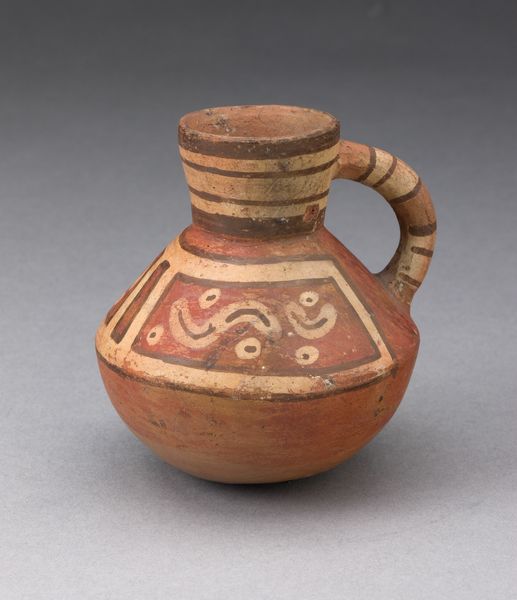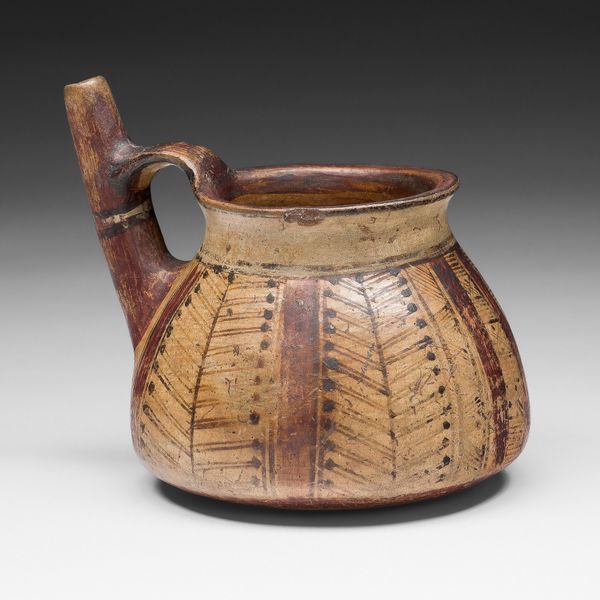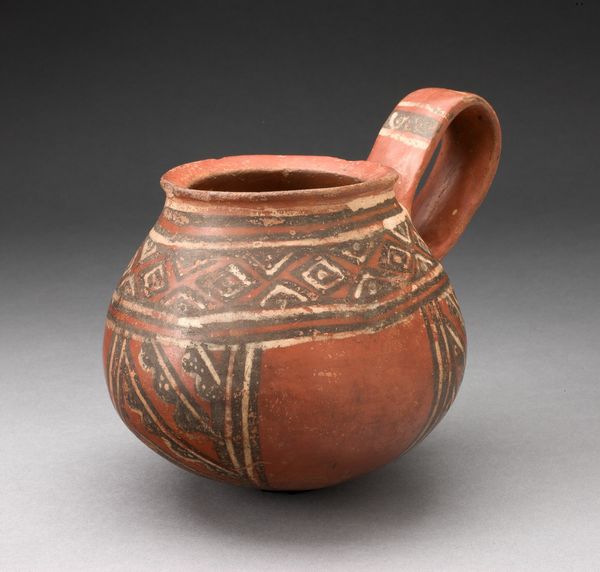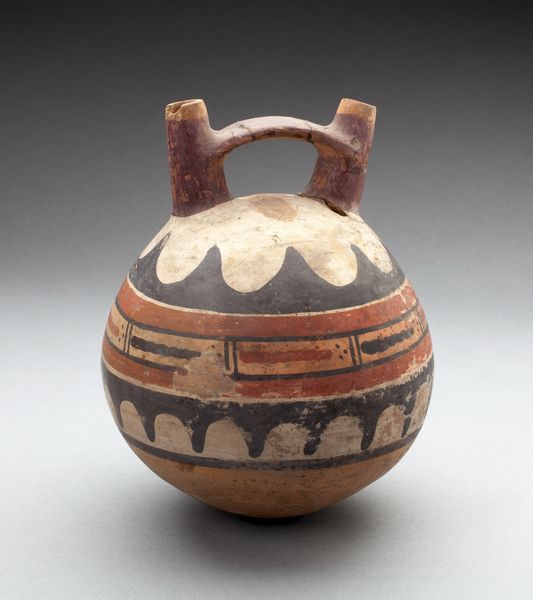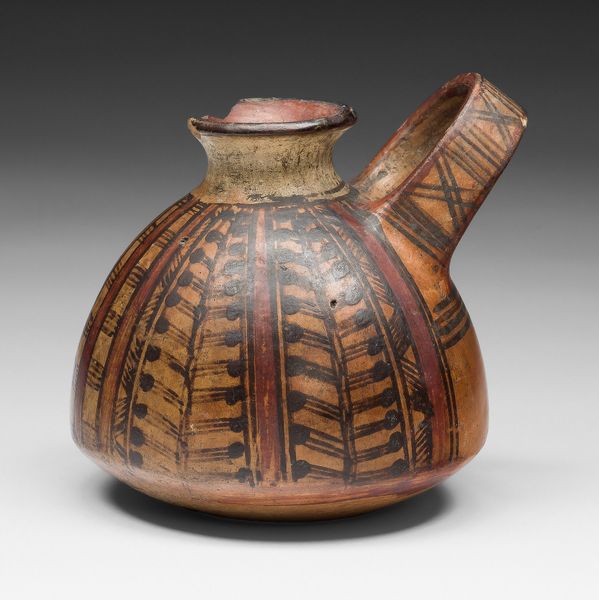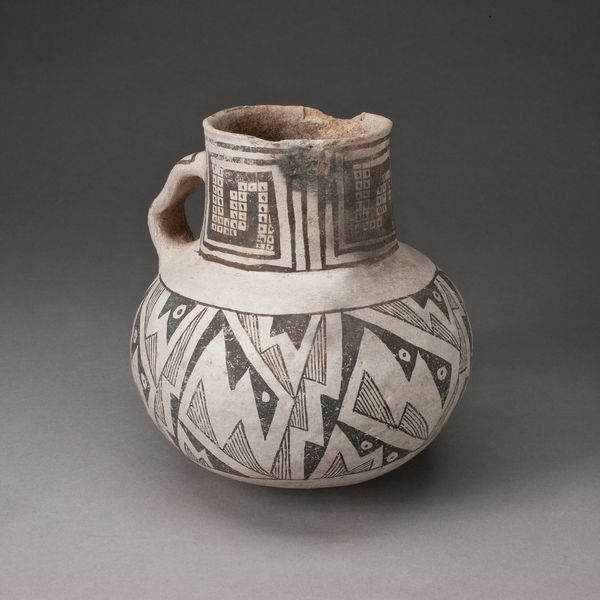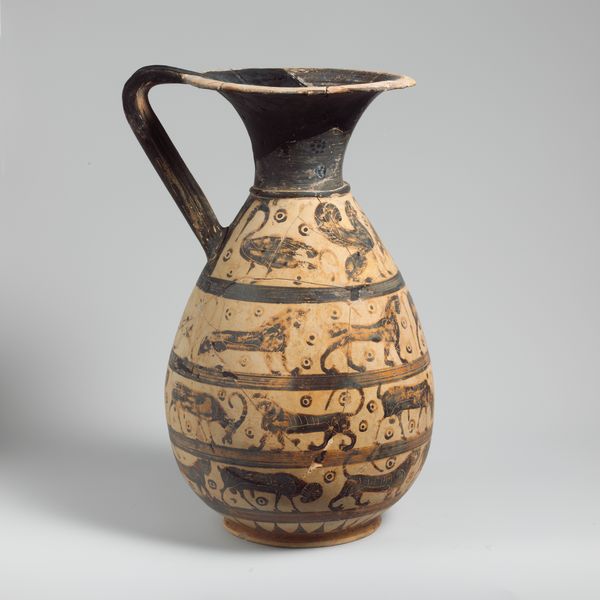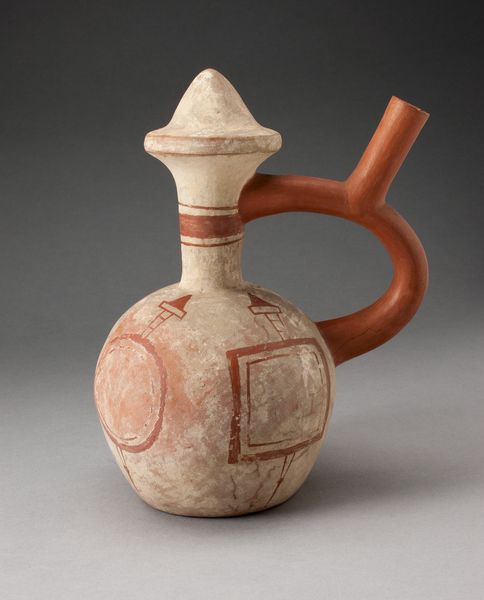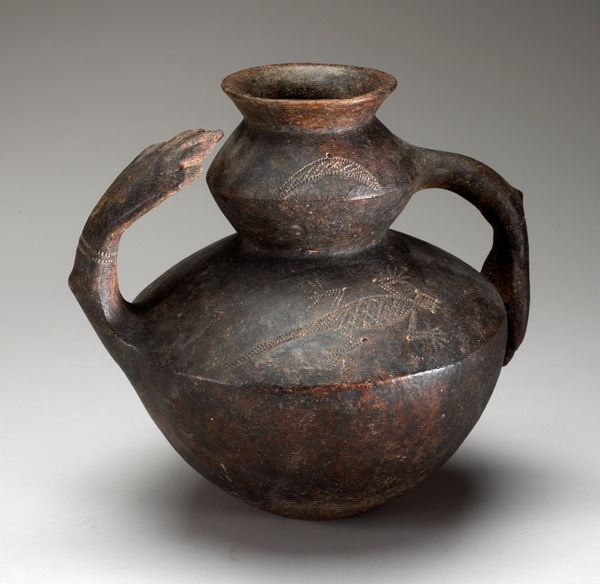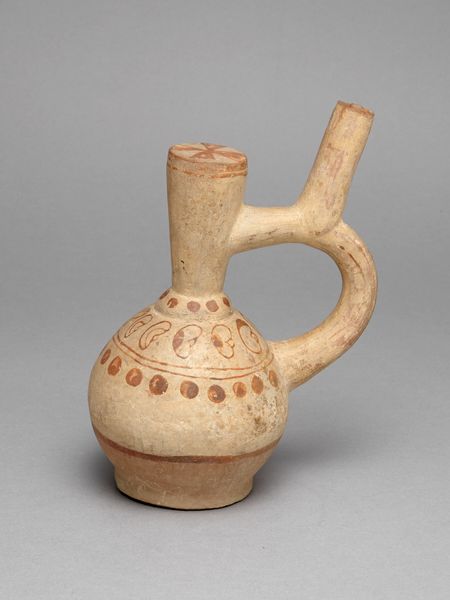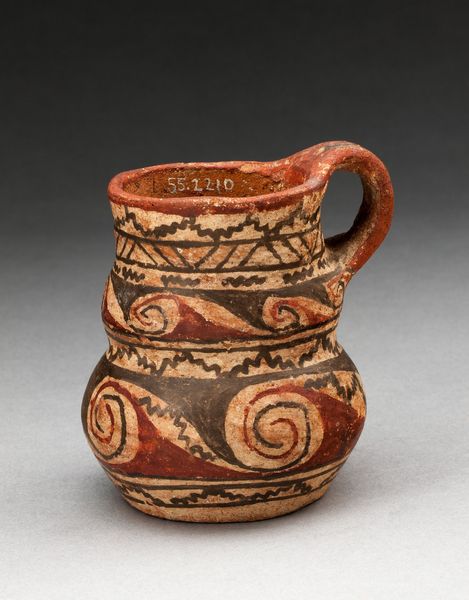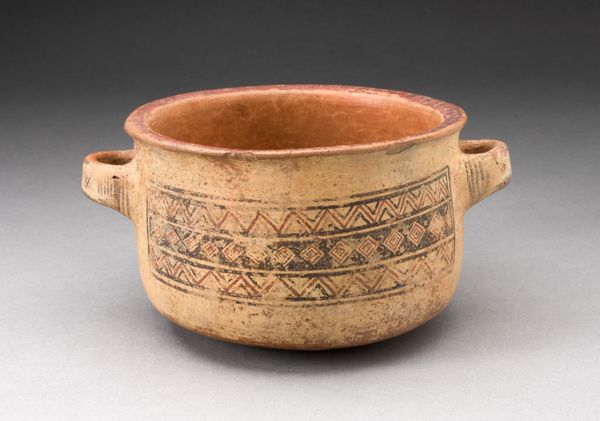
ceramic, earthenware
#
ceramic
#
earthenware
#
ceramic
#
indigenous-americas
Dimensions: 3 1/16 x 4 5/8 x 3 11/16 in. (7.78 x 11.75 x 9.37 cm)
Copyright: Public Domain
Curator: We're looking at a ceramic vessel, estimated to have been made between 1200 and 1300 by the Hisatsinom, the Ancestral Hopi people. Editor: It's surprisingly charming. The earthenware has a lovely, almost fragile, quality despite its age. I’m drawn to the geometric patterns—a very compelling use of shape. Curator: Absolutely. We see how integral pottery was within Ancestral Hopi society, reflecting not only practical function but complex cosmological beliefs. This object likely played a vital role in daily life or perhaps ritualistic practice. Editor: I find the balance between the smooth curves of the vessel and the sharp angles of the painted designs particularly striking. Note how the artist divides the form, using those horizontal bands to emphasize the vessel's rounded nature. There’s an intentional dialogue happening between the container’s form and surface articulation. Curator: Precisely. The minimalist, dark pigments set against the earthenware give it a stark graphic quality. What's also critical is to consider how the availability of resources shaped their choices. Earthenware was ubiquitous and ideally suited for creating tools. The pigments derived from local minerals dictated the restricted palette, reflecting available knowledge systems of transforming environment to useful substance. Editor: The presence of that squared spiral is equally intriguing. Are we to interpret it solely as surface design? Or might we approach that through symbolism? Is this merely an echo of something, an abstraction of say, landscape elements in nature that reflect a grander order or wayfinding that ties identity together with ancestral homelands? Curator: Certainly, your approach is a possibility. Beyond that we have to reflect that the vessel represents only a small part of an integrated societal existence from millennia ago that continues until the present. Such geometric configurations speak to cultural persistence even in times of disruptive historical conditions of violence. Editor: It prompts reflection about our human impulse to decorate functional items with signs that may possess symbolic meaning—or it challenges the rigid lines we draw around "decorative" arts at all! I see such interplay happening in this “vessel.” It gives us plenty to consider beyond its immediate surface. Curator: Indeed. Understanding its cultural heritage contextualizes it within an ongoing story, as much more than just form. Editor: And its striking use of form asks us to see function also as meaning.
Comments
No comments
Be the first to comment and join the conversation on the ultimate creative platform.
